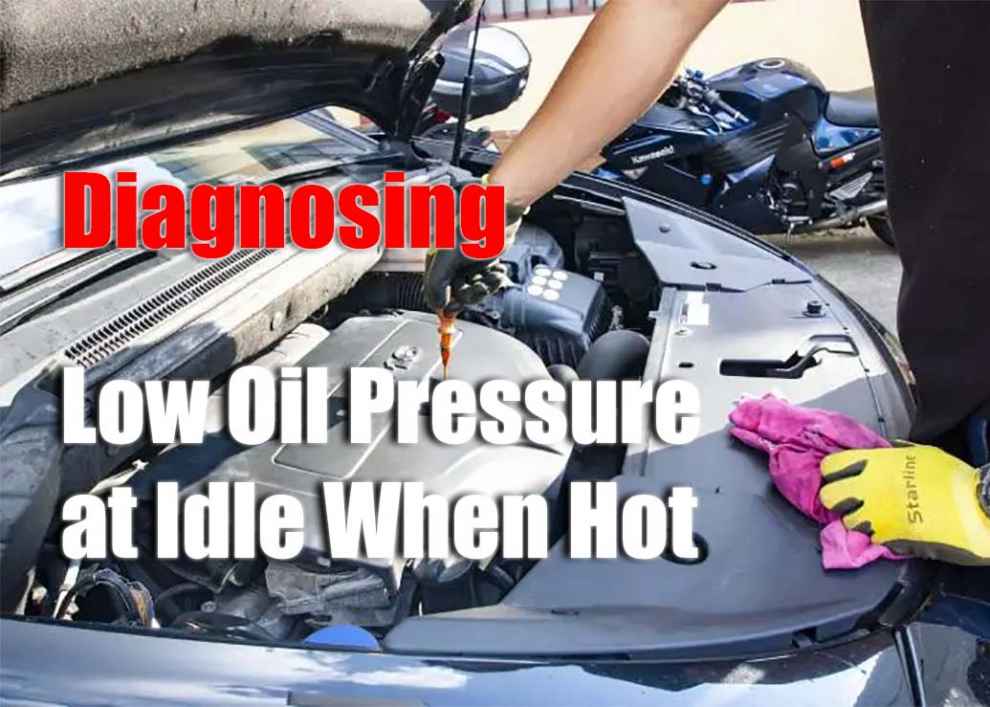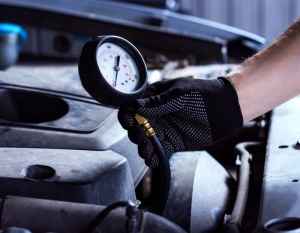Low oil pressure at idle can be a serious problem that should not be overlooked. It is important to diagnose the problem immediately to prevent further damage to the engine and ensure the vehicle’s performance and reliability. In this guide, we will discuss what causes low oil pressure at idle when hot and how to diagnose it properly.
What Causes Low Oil Pressure At Idle When Hot?
A number of factors can cause low oil pressure at idle when hot, including but not limited to:
-
Clogged Oil Filter – A clogged or dirty oil filter can cause a restriction in the flow of oil, resulting in low oil pressure when the engine is running hot.
-
Thin or Dirty Engine Oil – If the engine oil becomes too thin due to age or if it is excessively dirty due to lack of regular maintenance, it can cause low oil pressure at idle when hot as well due to decreased lubrication between moving parts within the engine block and cylinder heads causing increased friction which results in lower levels of pressure build-up within them .
-
Faulty Main Bearings, Rod Bearings or aft Bearings – The main bearings, rod bearings and camshaft bearings all have to do with the rotation of the crankshaft and other internal components. If any of these components become worn out from excessive heat or wear, they can cause reduced oil pressure at idle when hot as a result of decreased lubrication between them.
-
Worn Out Timing Chain and Gears – The timing chain and gears keep the valves in sync with the pistons inside the engine block. If these components become worn out from overuse or lack of maintenance, they can cause low oil pressure at idle when hot due to reduced lubrication within their respective areas.
-
Faulty Oil Pump – The oil pump is responsible for supplying pressurized oil throughout the engine block and its various moving parts. If there is a problem with the oil pump, it can result in low oil pressure at idle when hot due to reduced flow rate or inadequate amount being pumped through the system.
-
Malfunctioning PCV Valve – The PCV (positive crankcase ventilation) valve is responsible for regulating exhaust gas recirculation within an engine’s crankcase in order to reduce emissions levels while also maintaining proper operating temperatures within its cylinders. If the PCV valve is not functioning properly, it can cause low oil pressure at idle when hot due to inadequate flow of oil within the engine block.
How To Check For Low Oil Pressure At Idle When Hot
-
Symptoms of Low Oil Pressure At Idle – One of the most obvious signs that you may be experiencing low oil pressure at idle when hot is a rapid rise in temperature gauge or check engine light as well as an unusually loud engine noise accompanied by smoke coming out from under the hood.
-
Checking The Gauge Reading – To check for actual low oil pressure, you should access your vehicle’s dashboard and look for the oil pressure gauge which will tell you if there is a decrease in oil pressure when running hot and at idle. The ideal reading should be between 15-35 psi (pounds per square inch). If your readings are lower than that, then you may have a problem with your car’s oil system and should take it to a repair shop immediately for further diagnosis and repairs if needed.
-
Checking The Vehicle’s Internal Components – Once you have established that there is indeed low oil pressure at idle when hot, it’s time to take a closer look at the vehicle’s internal components in order to determine the exact cause of the problem. This will require professional help as they will be able to properly diagnose and repair any issues that may be present.
Conclusion
Low oil pressure at idle when hot can cause serious damage to your engine if left unchecked, so it is important that you pay attention to any signs or symptoms that may suggest a decrease in oil pressure as well as regularly check your vehicle’s oil gauge readings. If you suspect that there is low oil pressure at idle when hot, it’s best to take your car into a repair shop for further diagnosis and repairs if needed in order to prevent further damage and ensure the performance and reliability of your car for years to come.

 Thin or Dirty Engine Oil – If the engine oil becomes too thin due to age or if it is excessively dirty due to lack of regular maintenance, it can cause low oil pressure at idle when hot as well due to decreased lubrication between moving parts within the engine block and cylinder heads causing increased friction which results in lower levels of pressure build-up within them .
Thin or Dirty Engine Oil – If the engine oil becomes too thin due to age or if it is excessively dirty due to lack of regular maintenance, it can cause low oil pressure at idle when hot as well due to decreased lubrication between moving parts within the engine block and cylinder heads causing increased friction which results in lower levels of pressure build-up within them .
Add Comment